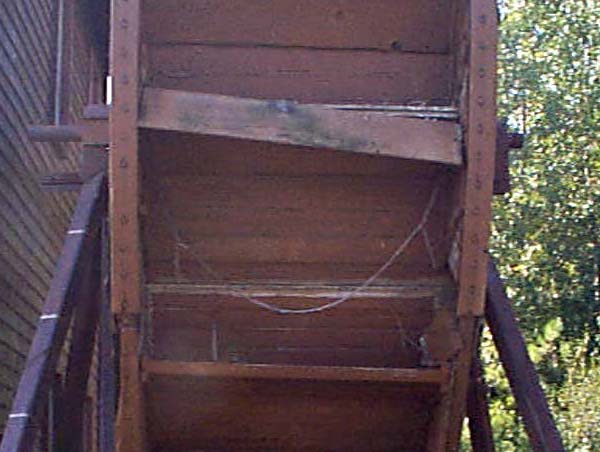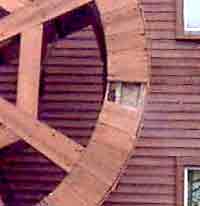

Your Waterwheel Solution
Why Metal over Wood
 |
 |
This is why!
The 1850ís began the change of production of wooden waterwheels to those of metal. Mill owners of the time realized the practically and the higher efficiency of smooth running metal waterwheels.
Metal waterwheels keep on working during hash winters. The metal fins of the buckets act as a heat conductor of the warmer water and allow the wheel to operate at lower temperatures than a wooden waterwheel. Wooden waterwheels would stop due to icing. Even if a wooden wheel did not ice up, it soaks water into the wood and goes out of balance, decreasing its efficiency. Out of balance wheels require more maintenance due to the wheel jumping around causing undo stress on the bearings and structure. An out of balance wheel also creates inefficiency of any machines operating off of it. Machines and motors require a constant rate of speed.
Wooden wheels go through a constant swelling and drying process, all parts of the wheel soon become loose and the buckets begin to leak and fall apart. This leads to the need to replace a wooden wheel on a regular basis. A metal wheel if cared for will last a 100 years or more.